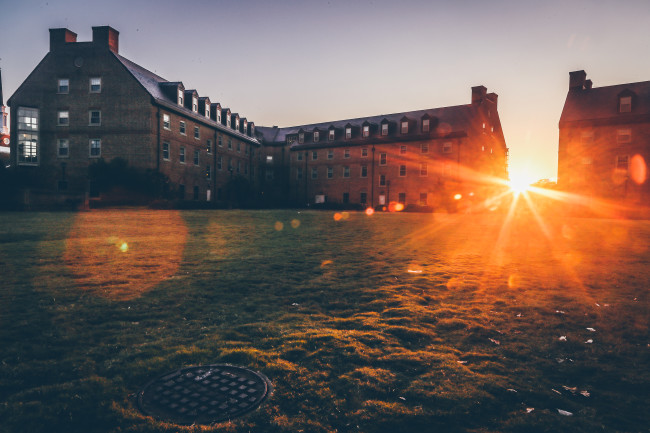In April 2016, the College of William and Mary’s Board of Visitors passed a resolution renaming Jamestown North and South Halls as Lemon and Hardy Halls, in memory of a former slave owned by the College in the 18th century named Lemon, and a later honorary African-American dean named Carroll Hardy.
On Saturday, Oct. 15 the College held a dedication ceremony for Lemon and Hardy Halls in front of Jamestown field. College President Taylor Reveley, Hardy’s family, alumni and students attended.
In a speech at the start of the ceremony, Reveley said there was more to come.
“The names of Lemon and Hardy now grace two of William and Mary’s most elegant and engaging residence halls, and I think the names will lead the ways for all the other buildings on campus that will be named for people of color during the generations to come — the Lemon and Hardy Halls comes first,” Reveley said.
The Lemon Project, established by the Board of Visitors in 2009, is an ongoing research initiative to explore the College’s involvement in slavery, segregation and its ongoing relationship with the African-American community.
Discussing the Lemon Project, Reveley said Lemon embodies all African-Americans, known and unknown, who helped sustain the College’s development and push it forward. Lemon became the name of the College’s initiatives to help lead the way towards atonement and reconciliation.
Chief Diversity Officer Fanchon Glover discussed the enormous significance of the renaming of these two residence halls.
Today we add a new chapter to the history book of William and Mary,” Glover said. “For the first time in history, we are naming two buildings for African-Americans, that in itself is worth the celebration … We join a very small and unique group of universities who have actually named buildings after enslaved persons. I am very proud that we are in that group, as we named Mr. Lemon.”
“Today we add a new chapter to the history book of William and Mary,” Glover said. “For the first time in history, we are naming two buildings for African-Americans, that in itself is worth the celebration … We join a very small and unique group of universities who have actually named buildings after enslaved persons. I am very proud that we are in that group, as we named Mr. Lemon.”
Later in the ceremony, Hardy’s brother John Stuart gave a memorial speech for his sister.
“She was an amazing woman,” Stuart said. “She was like a mother, a grandmother to my children and my family. Carroll treated all people with dignity and respect, and that is something we all should do. She treated people with such kindness and love no matter what are your backgrounds and ethnicities, she gave her heart all the time.”
Carmen Anthony ’00, who was once a student of Hardy, discussed her experiences with Hardy.
“Dean Hardy had made huge impacts in my life,” Anthony said. “She made numerous efforts towards raising the consciousness of racial diversity on campus. I should and have to be here today for her.”
President of the Alumni Association Cynthia Jarboe ’77 said she regarded the renaming of the Lemon and Hardy Halls as a phenomenal achievement for the College.
When asked about her general feelings about the efforts the College had made throughout the years, she said she had witnessed great progress.
It is so rewarding to see that there is an increasing number of minority student leaders on this campus,” said Jarboe. “As the president of the Alumni Association, I got time to spend with those great leaders that were minorities … It was just simply wonderful.”
Current resident of Lemon Hall Greg Akerman ’18 said he has been looking forward to this day for a long time.
As a resident in this hall, I always hear great things about those two figures in the history of William and Mary,” Akerman said. “I want to pay my respects to these two great people in the history of our college that made my life now possible.”
“As a resident in this hall, I always hear great things about those two figures in the history of William and Mary,” Akerman said. “I want to pay my respects to these two great people in the history of our college that made my life now possible.”
Lemon Hall also houses the Mosaic House, a living option for undergraduates of the College who are interested in an ongoing intellectual exchange about culture, diversity, interracial communities and sexuality.
The dedication ended with the plaque unveiling ceremony. Two plaques were established in front of the Lemon and Hardy Halls, which had Lemon and Hardy’s life biographies and contributions to the College enscribed on them. The College also presented Hardy’s family members and the Lemon Project’s staff with duplicates of the plaques.


I’d like to point out that Mosaic House is actually in Hardy, not Lemon.